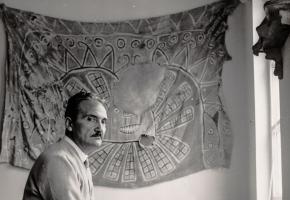'The Tango Singer' by Tomás Eloy Martínez (2004)
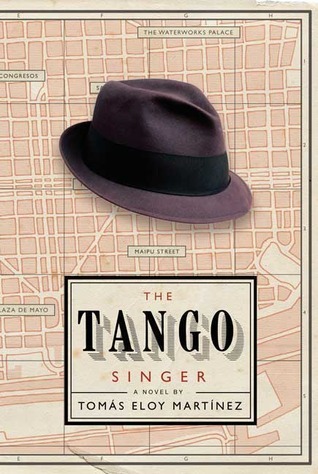 Bruno Cadogan, a doctoral student in New York, is having trouble with his dissertation on writer and poet Jorge Luis Borges’s essays on the tango. He decides to travel to Buenos Aires in search of inspiration and to track down a disabled, haemophiliac tango singer named Julio Martel – rumoured to be even better than the legendary Carlos Gardel.
Bruno Cadogan, a doctoral student in New York, is having trouble with his dissertation on writer and poet Jorge Luis Borges’s essays on the tango. He decides to travel to Buenos Aires in search of inspiration and to track down a disabled, haemophiliac tango singer named Julio Martel – rumoured to be even better than the legendary Carlos Gardel.
Cadogan arrives in the Argentinian capital in 2001, in the midst of financial meltdown and political instability. He pounds the streets of Buenos Aires searching for the elusive singer, who makes unannounced appearances in seemingly random locations across the city. But as he begins to unravel the mystery of Martel’s life, he learns that the tango singer’s performances map the city’s murky past. Cadogan also develops an obsession with the “The Aleph” – the imaginary point in space that contains the entire universe – as described in an eponymous short story by Borges.
In this vibrant and passionate novel, Martínez meshes fact with fiction to reveal unsavoury events – human trafficking, torture, killings – in the history of “a city where unpunished crimes abound”. However, this book is also a homage to both Buenos Aires and Borges.
'Martínez, one of Argentina’s best-known journalists and authors, was forced into exile in the 1970s. He went to Venezuela, later moving to the US, and didn’t return to live in Argentina until 2006. He died in 2010.
'My Father’s Ghost is Climbing in the Rain' by Patricio Pron (2013)
 Patricio Pron’s genre-defying novel of a struggle between memory and forgetting focuses on the “dirty war” in the 1970s when the country was under military rule.
Patricio Pron’s genre-defying novel of a struggle between memory and forgetting focuses on the “dirty war” in the 1970s when the country was under military rule.
The narrator returns to Argentina in 2008 from self-imposed exile in Berlin to be with his dying father. In his parents’ house, he finds a trove of newspaper articles and photographs relating to a recent missing-person case, that of 60-year-old Alberto José Burdisso. But the key is material about the disappearance of Alberto’s sister, Alicia, decades earlier, under the murderous military dictatorship. Through it, the son is able to piece together his father’s past. He learns that his parents were part of an underground leftwing Peronist group that opposed the military junta – and that some members paid for their audacity with their lives.
The quirky, fragmented telling of the story is challenging in parts, but perseverance pays dividends as the haunting novel excavates the family’s – and Argentina’s – recent history, with its attendant horrors.“Your father isn’t sad that he fought the war,” the narrator’s mother says, “he’s only sad that we didn’t win.”
In this largely autobiographical tale, the author pays tribute to those in his parents’ generation who defied the dictatorship. Pron was born in Argentina in 1975, the year before the dirty war began. He now lives in Spain.
'Ficciones' by Jorge Luis Borges
This collection of seventeen stories showcases Jorge Luis Borges's unparalleled creativity and intellect, exploring surreal, otherworldly realms and concepts like eternal return and the abyss.
With an obsession for fantasy and piercing irony, Borges invites readers on a journey through the iconography of literature, the labyrinth of books, and even Heaven and Hell themselves.
More than short stories, these are thought-experiments and meta-fiction. Sometimes only after a story has ended you come to realise that Borges has been playing games with you. The first story for example, “Tlön, Uqbar, Orbis Tertius”, is on the face of it a story about a fictional land that starts to infect reality. But once you starting thinking about it more, then you start to wonder whether that land is actually fictional or real, or is being brought into being by us. And then there is the recurrent imagery of mirrors and that the fictional land could be a mirror to our world, and mirrors multiply what they reflect, and that mirroring could be the infection of our reality. And then the whole story could be seen as a commentary on ideology, and how ideologies can change our perceptions of history and reality.
Fascinating and very impressive, mostly on an intellectual level and not on an emotional one, this is a must-read for fans of fantastical fiction.
'Thursday Night Widows' by Claudia Piñero
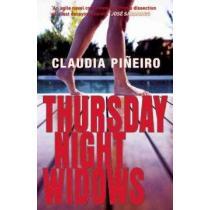 Shortlisted for the International Booker Prize '22, Thursdays’ Widow opens with the crime and hastily retreats back a decade in order to explain the characters involved and their particular lifestyle. They all live in a luxury, secure, gated-community, The Cascades, 30 kilometres from Buenos Aires. Piñeiro builds a picture of its inhabitants through smooth and elegant prose, like the manicured lawns, as the lives of those in the complex are laid out – though there is nothing so unpleasantly outre as a direct examination of a person or incident. As we grow closer to the end of the novel, things start to unravel – emotionally for the women, financially for the men, in the main – with clues getting bigger about what the future holds. And then finally we return to that Thursday night of the book’s opening.
Shortlisted for the International Booker Prize '22, Thursdays’ Widow opens with the crime and hastily retreats back a decade in order to explain the characters involved and their particular lifestyle. They all live in a luxury, secure, gated-community, The Cascades, 30 kilometres from Buenos Aires. Piñeiro builds a picture of its inhabitants through smooth and elegant prose, like the manicured lawns, as the lives of those in the complex are laid out – though there is nothing so unpleasantly outre as a direct examination of a person or incident. As we grow closer to the end of the novel, things start to unravel – emotionally for the women, financially for the men, in the main – with clues getting bigger about what the future holds. And then finally we return to that Thursday night of the book’s opening.
'Hopscotch' by Julio Cortazar (1963)
 Follow Horacio Oliveira, an Argentine writer living in Paris with his mistress and bohemian friends, as he embarks on a life-changing journey prompted by a child's death and La Maga's disappearance, leading him to return to Buenos Aires.
Follow Horacio Oliveira, an Argentine writer living in Paris with his mistress and bohemian friends, as he embarks on a life-changing journey prompted by a child's death and La Maga's disappearance, leading him to return to Buenos Aires.
Hopscotch is an adventure-filled tale heavily influenced by Henry Miller's search for truth and Zen Buddhism. Cortázar's use of interior monologue, punning, and different languages is reminiscent of Modernist writers while drawing inspiration from Surrealism, the French New Novel, jazz, and New Wave Cinema.
The National Book Award-winning translation by Gregory Rabassa earned high praise from Cortázar, who recommended the translator to Gabriel García Márquez.
'The Dangers of Smoking in Bed' by Mariana Enriquez
 The Dangers of Smoking in Bed is a spine-chilling collection of modern gothic short stories. These tales focus around ghosts and hauntings, cults and witches, curses and cursed places. If you’re a fan of horror and gothic fiction, you can’t do better than this book from one of the best Argentine writers around. Take the story Meat, which begins with an Argentinian rock star with a cult following of obsessed teenagers. When he kills himself (in the most brutal fashion) in a hotel room, the media predicts a slew of copycat suicides. Instead, something far darker and stranger follows.
The Dangers of Smoking in Bed is a spine-chilling collection of modern gothic short stories. These tales focus around ghosts and hauntings, cults and witches, curses and cursed places. If you’re a fan of horror and gothic fiction, you can’t do better than this book from one of the best Argentine writers around. Take the story Meat, which begins with an Argentinian rock star with a cult following of obsessed teenagers. When he kills himself (in the most brutal fashion) in a hotel room, the media predicts a slew of copycat suicides. Instead, something far darker and stranger follows.
In other stories: a woman is sexually obsessed with the human heart; a lost, rotting baby crawls out of a backyard and into a bedroom; an entire neighborhood is cursed to death by a question of morality they fail to answer correctly.
Mariana Enriquez has been critically lauded for her unconventional and sociopolitical stories of the macabre: populated by unruly teenagers, crooked witches, homeless ghosts, and hungry women, they walk the uneasy line between urban realism and horror.
In this collection you'll finds Enriquez at her most sophisticated, and most chilling. Her stories are as terrifying as they are socially conscious, and press into the darkness of human history with unsettling urgency and with resounding tenderness towards those in pain, in fear, and in limbo.
'The Tunnel' By Ernesto Sabato (1948)
 A psychological novel explored through obsessive love, The Tunnel is a timeless work championed by literary greats including Albert Camus and Thomas Mann. The story follows artist Juan Pablo Castel, imprisoned for his murder of María Iribarne, whom he became infatuated with after she examined one of his paintings.
A psychological novel explored through obsessive love, The Tunnel is a timeless work championed by literary greats including Albert Camus and Thomas Mann. The story follows artist Juan Pablo Castel, imprisoned for his murder of María Iribarne, whom he became infatuated with after she examined one of his paintings.
As their relationship develops, Castel's paranoia grows and ultimately leads to the destruction of the one thing he cares about. This international bestseller is a must-read for fans of classic literature.
The Wind That Lays Waste' By Selva Almada (2012)
 Travel to rural Argentina and spend a day with four unique characters who are brought together by fate. Reverend Pearson and his daughter Leni, stranded after a car breakdown, seek refuge with an aging mechanic named Gringo Brauer and a young boy named Tapioca. As the storm approaches, tensions rise and beliefs are questioned. Selva Almada's debut is a profound and poetic novel, showcasing her undeniable talent and poise in crafting a beautifully written story set against the backdrop of the Argentinian countryside.
Travel to rural Argentina and spend a day with four unique characters who are brought together by fate. Reverend Pearson and his daughter Leni, stranded after a car breakdown, seek refuge with an aging mechanic named Gringo Brauer and a young boy named Tapioca. As the storm approaches, tensions rise and beliefs are questioned. Selva Almada's debut is a profound and poetic novel, showcasing her undeniable talent and poise in crafting a beautifully written story set against the backdrop of the Argentinian countryside.
'Kiss of the Spider Woman' by Manuel Puig
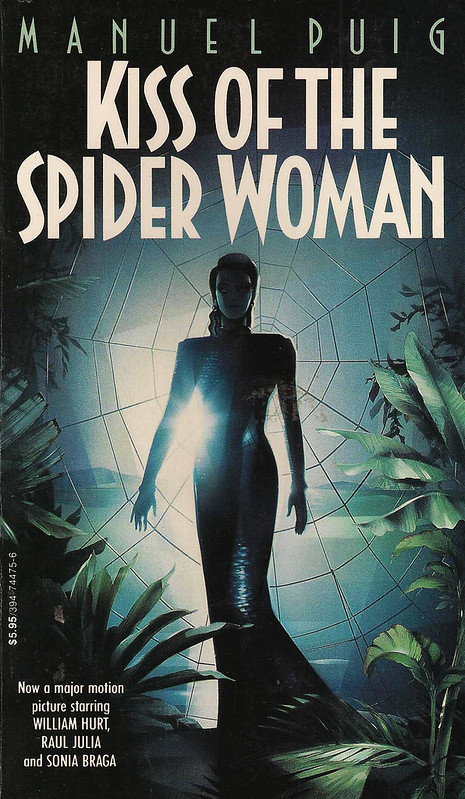 "Kiss of the Spider Woman" is a novel set in an Argentine prison where two cellmates, a gay window dresser and a political revolutionary, share stories to pass the time. The window dresser recounts various films he's seen, which often involve strong, glamorous women, while the revolutionary shares his political ideologies. As they spend time together, they form an unlikely bond, exploring themes of sexuality, oppression, and the power of storytelling.
"Kiss of the Spider Woman" is a novel set in an Argentine prison where two cellmates, a gay window dresser and a political revolutionary, share stories to pass the time. The window dresser recounts various films he's seen, which often involve strong, glamorous women, while the revolutionary shares his political ideologies. As they spend time together, they form an unlikely bond, exploring themes of sexuality, oppression, and the power of storytelling.
'The Censors' by Luisa Valenzuela
The Censors is a satirical short story that delves into the life of a man who takes a job as a censor at a government agency in an attempt to intercept and approve his own letter, which he had previously sent abroad. As he becomes increasingly absorbed in his role, he starts to censor letters with zeal, losing sight of his original purpose. The story serves as a cautionary tale about the corrupting influence of power and the ease with which one can become complicit in oppressive systems, ultimately leading to a grim and ironic conclusion where the protagonist falls victim to the very system he sought to manipulate.
'The Witness' by Juan José Saer
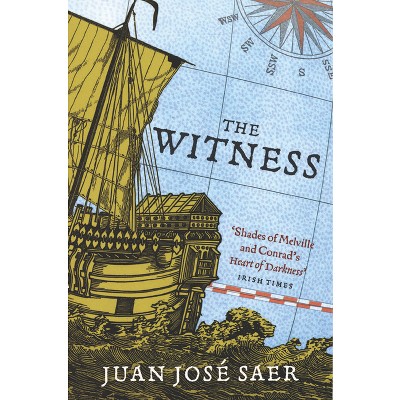 The Witness is a novel that explores the life of a young European boy who is the only survivor of a shipwreck in the 16th century. He is found and raised by a tribe of Indians in South America, where he spends ten years of his life. The boy is eventually found by a band of Spanish conquistadors and returns to Europe, where he becomes a well-respected scholar. The story unfolds as the man, now in his 90s, recounts his experiences and struggles to reconcile his European identity with his decade-long immersion in the tribal culture.
The Witness is a novel that explores the life of a young European boy who is the only survivor of a shipwreck in the 16th century. He is found and raised by a tribe of Indians in South America, where he spends ten years of his life. The boy is eventually found by a band of Spanish conquistadors and returns to Europe, where he becomes a well-respected scholar. The story unfolds as the man, now in his 90s, recounts his experiences and struggles to reconcile his European identity with his decade-long immersion in the tribal culture.
'The Invention de Morel' by Adolfo Bioy Casares
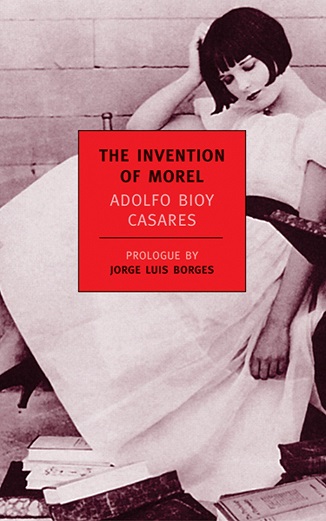 Adolfo Bioy Casares (1914-1999) was great friends with Jorge Luis Borges, who was also his mentor (and he wrote a prologue for this book). The story is set on a mysterious island (with an obvious reference to The Island of Dr. Moreau). A man pursued by the police manages to escape there. The book is his diary on the island. He is sure they won’t think of finding him in this deserted place, where a fatal disease won’t let you survive for more than a couple of weeks. The unnamed narrator still decides to go there, as he is sure he can survive.
Adolfo Bioy Casares (1914-1999) was great friends with Jorge Luis Borges, who was also his mentor (and he wrote a prologue for this book). The story is set on a mysterious island (with an obvious reference to The Island of Dr. Moreau). A man pursued by the police manages to escape there. The book is his diary on the island. He is sure they won’t think of finding him in this deserted place, where a fatal disease won’t let you survive for more than a couple of weeks. The unnamed narrator still decides to go there, as he is sure he can survive.
When he arrives, he finds remnants of civilization (a museum, a chapel, and a swimming pool), but no one lives there.Until he does see a group of people. They interact and seem to be doing some secret experimentations, but somehow the fugitive seems invisible to them. Why? How can he reach out to a woman he falls in love with, in that group? Despite its shortness, less than 100 pages, The Invention of Morel is packed with intriguing elements and themes. Their modernity is even more striking if you keep in mind that the book was published in 1940.
The Argentina Reader edited by Gabriela Nouzeilles and Graciela Montaldo (2002)
An impressive array of articles and documents offers a stellar introduction to this enigmatic country. Once one of the richest nations in the world, Argentina entered the 21st century with its economy in tatters and its politics tarnished by corruption and authoritarianism. The “missteps” that laid the country low are chronicled here.
A wide range of contributors – mostly Argentinians – write on history, society, politics and culture. Ten chapters tell the country’s story from the colonial period, through independence in 1810, to the 21st century.
The main focus is on the 20th century, when popular movements spurred the “puzzling political phenomenon” of Peronism and the revolutionary ideals of the 1960s and 1970s. But these were decimated by death squads as Argentina descended into “the bloodiest dictatorship in its history”: thousands were tortured and killed under military rule between 1976 and 1983. When democracy finally returned, it came with some unpalatable add-ons – hyperinflation, neoliberal policies and IMF edicts – that shattered Argentinians’ standard of living.
Although the book runs to almost 600 pages, the easily digestible chapters allow for dipping in and out at leisure. A richer and more eclectic overview of the country and its people would be hard to find. Argentinian academics Gabriela Nouzeilles and Graciela Montaldo are professors at Princeton University and Columbia University, respectively.
For more info on great books to read from around the world visit READ THE WORLD





